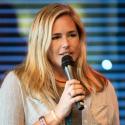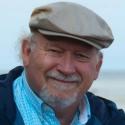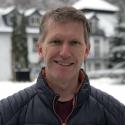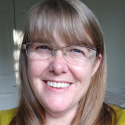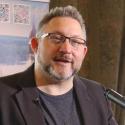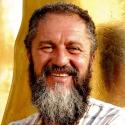2023 Artists Network
- Image
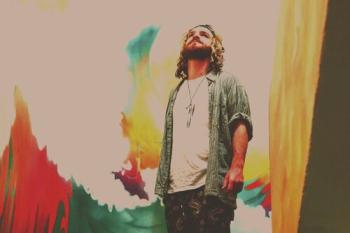
G.K. Chesterton wrote, “The function of imagination is not to make strange things settled, so much as to make settled things strange; not so much to make wonders facts as to make facts wonders.”
Artists of all types are tasked with inviting their viewers and hearers to see and listen. To make facts into wonders. Art is uniquely suited to enrich our prayer lives, catalyze renewed engagement with the Bible, foster empathy, enhance our spiritual perception, challenge our beliefs in healthy ways, and bring us into more intimate contact both with our Lord and the world. It invites us to slow down and gaze deeply. Art communicates, questions, and holds accountable. It stirs and reveals.
The arts in all their forms are good gifts from God, intended to be cultivated and employed, communicating God’s message for humanity. As artists, we need to mindfully consider how to practice the habit of seeing and listening on our own in order to create. At the 2023 gathering of the Artists Network, we will approach this way of contemplative seeing through the lenses of music, painting and visual arts, film, literature, and more.
Applicants should be artists who are engaging with society or the church. The Network provides a haven where Christian artists gather in community for relationship, spiritual nourishment, deep thinking, professional growth, and strategic possibilities.
Network Leadership
Network Speakers
Andy Bannister is a highly in-demand speaker, writer, and broadcaster. Based in the UK, he's the director of the Solas, an evangelism and training ministry. Andy is the author of several books including "The Atheist Who Didn’t Exist (or: The Dreadful Consequences of Bad Arguments)… Read more
Heather Holdsworth is a Bible teacher, author and artist. Her focus is on the Spiritual Formation of people of all ages. As a teacher she developed a keen interest in how people grow. Following a 2-year diploma in Practical Theology, she completed an MA in Spiritual Formation & Discipleship… Read more
Charles David Kelley is Latvian-American, a citizen of both countries. He serves as co-leader of the ELF Artist Network. Born in Los Angeles, he has lived in Oregon since 1980. His professional training is in biblical studies, theology, and missiology. Before founding Bridge Builders… Read more
Joshua J. Masters is a pastor, author, and international speaker with a heart for leading through culture and relationship building. He also serves as the Executive Director and missionary for Bridge Builders International, a U.S. based organization serving the Baltics and greater Europe. His… Read more
Natalie Meeks is the President/CEO of Bridge Builders International, which ministers to artists in multiple countries in Europe and the US. She currently studies at Western Theological Seminary and, as a freelance writer, has penned articles about ministries all over the world Her Christian… Read more
Liviu Mocan is a Romanian artist living in Cluj-Napoca, Transylvania. The rich Christian legacy that he inherited from his parents, from church, and from mature artists and theologians has guided his philosophy of life and formed the essence of his creation. His many and varied works – which can… Read more
Rodica Mocan is Professor at the Department of Cinematography and Media, specializing in digital media and the new media arts. She holds a Ph.D. in Sociology (2005), with a focus on e-learning and a Ph.D. in Theater and Performing Arts (2016), with research on interactive digital art… Read more
Ever since his concerto debut at the age of ten, Reinis Zariņš has performed as a concerto soloist, recitalist, and chamber musician throughout Europe and North America. He has participated in prestigious music festivals including the Lucerne Festival, the Bath International Music Festival, and… Read more
Network Programme
Sunday, 21 May
Author Madeleine L’Engle wrote, “In art we are once again able to do all the things we have forgotten; we are able to walk on water; we speak to the angels who call us; we move, unfettered, among the stars.” For L’Engle, there was no distinction between her Christian faith and her art; the disciplines that strengthened one, strengthened the other, and the distractions and temptations that drew her away from one weakened her in the other. In this session, we will consider what it means to be a Christian artist – one called to love his neighbor and be a fruitful member of the Body of Christ – and glimpse a vision of a reality in which we may thrive as artists and as disciples of Christ.
One of Professor Albert Einstein’s most surprising quotes was, “Imagination is more important than knowledge.” Was he correct? Clearly, he understood that imagination and all of its related cousins, like creativity, ideation, innovation, and change, were indispensable to virtually all things related to living life to the fullest. This workshop will look at these topics and how they interrelate from the perspectives of Scripture, fascinating innovators, effective leaders, and influential artists of all stripes.
Monday, 22 May
In this talk, Latvian concert pianist Reinis Zarins proposes to survey a handful of contemporary classical composers who are all Christian, and each in their own way seek to express their worldview through their music. The resulting rich variety joyfully affirms the inconceivably abundant content of our faith. This talk will be accompanied by an evening recital that showcases the work of these composers.
For any work of art to be called ‘inspired’ is high praise, yet inspiration can be elusive. What is it that ignites our creativity? Is a breathtaking view essential to start a great painting or is emotional trauma crucial for composing epic music? Do we need to wait for our lives to crumble for genius to spark? By considering a number of unexpected ancient artists, we will look at what inspires us to create.
Tuesday, 23 May
What are human beings? Just a “random collection of atoms”? A “1% bit of pollution in the universe”? Genetic puppets “dancing to our DNA”? Those are all answers given by well-known atheists and if atheism is true, they’re consistent. But if talk of justice, dignity, and human rights is to work, we need something more than. In this talk, Dr. Andy Bannister will explore the implications of the Bible’s teaching that human beings bear the “image of God” (the Imago Dei)—and show why it is so profound, so vital, and utterly unique.
Whether our art is visual, musical, written, or theatrical, many Christian artists feel detached and out of place in the Church. When combined with many artists’ natural tendency to isolate ourselves within our chosen artforms, we can easily miss our calling to live and create in the community of Christ. Using two of the more collaborative arts as our model, theatre and filmmaking, we will explore what it means to be a community of artists who reflect the heart and purpose of the Acts 2 Church.
Wednesday, 24 May
All of humanity has experienced spiritual warfare since the creation of man. That is why the sculpture, “Saint George Killing the Dragon” has universal application. More than a legend, “St. George Killing the Dragon” has profound implications for all believers. Targeting the sky, they struggle to climb to the top of the mountain, but the descending dragon attacks them with temptations, requiring the Saints to wear the armor of God and fight. A master sculptor, Liviu Mocan, will share what he has learned from this fascinating image over the years.
Today, more than ever, it isn't easy to reach a consensus on what art is. Formally, aesthetically, and conceptually, art has evolved to a point where the possibility of a definition is being contested, not to mention reaching a common one. This was evident long before technology impacted all areas of life when modern art could still be approached from the paradigm of classical definitions. The close collaboration between experienced artists and visionary engineers in the context of digital culture has produced such radical changes in what we call "new media art" that the very concepts that define the triad "art - art object - artist" are being challenged. The ecosystem that surrounds artistic creation is being reshaped. Embraced with more or less enthusiasm, this genre of art that uses digital technology as the primary tool for producing, presenting, and archiving art has introduced information as the basis of the materiality of the art object. NFTs and art created by robots or artificial intelligence programs go far beyond what we could have imagined and cause stupor even among specialists initiated in the field. Starting from the accepted definitions of traditional art, using a comparative approach with more recent attempts to define new media arts, we will seek answers to the question that haunts us: where is art going?

